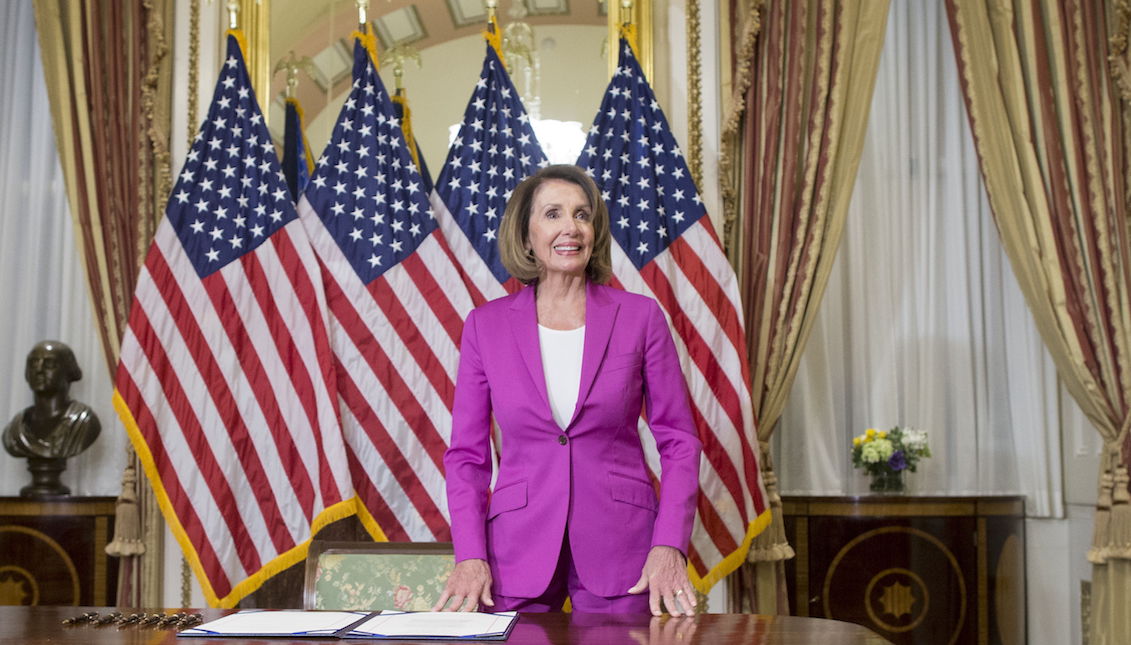
Don’t mess with Pelosi
The new Speaker of the House of Representatives has shown that she has what it takes to put the White House on track, and her strategy is becoming increasingly…
For those with little (or no) political memory, Nancy Pelosi has emerged as another pivotal player within the vagaries of the U.S. Congress.
However, her career and knowledge of the field have become increasingly evident in the aftermath of the Democrats' gains in the midterm elections - and, especially over the last few weeks during which time President Trump shut the government down in exchange for funds for his coveted border wall.
Pelosi, who represents California's 12th District, arrived in Congress in 1987. She has since been the first in many roles: the only woman to be Speaker of the House, the highest-ranking elected woman in the country's history, and the first former Speaker of the House to return to the position since Sam Rayburn in 1955.
Her political savvy was first made known during the George W. Bush Administration, during her opposition to the Iraq War and the privatization of Social Security.
That was when Pelosi coined the strategy that today serves to counteract Donald Trump’s efforts in the White House.
In 2004, after Bush's re-election, Pelosi refused to offer proposals that would make it easier for Republicans to privatize Social Security, which would have granted a partial victory to the then-president.
"While Democrats refused to engage in the details of the debate, infighting consumed Republicans," recalls Vox. "Bush attempted to barnstorm the country in support of privatization, but that only drew more attention to an embarrassing and unpopular situation. No bill ever came to a vote in either house of Congress."
Now, with Trump, a president who - shockingly - makes Bush look good, the result may not be very different.
At that time, Pelosi was the House Minority Leader, and the government was neither shut down nor under attack on all sides.
RELATED CONTENT
The pressure under which Republicans currently find themselves is much greater, and the investigations surrounding Trump's presidential campaign don’t help much, either.
For The Atlantic, this entire framework implies that "the most likely outcome to the current standoff is that Trump caves," which would mean, in the words of Lindsey Graham, "the end of his presidency.”
The mastery of Pelosi's strategy is one of the fundamental features of her leadership of the Democratic Party, whose failure in the 2016 elections prompted a profound internal transformation.
In order to reach her current position in the House, Pelosi had to face an outbreak of rebellion in her own ranks, led by a handful of representatives who opposed another term for her as Speaker.
Among them, the Representatives of New York, Kathleen Rice and Anthony Brindisi, who were excluded from the Judiciary and Armed Services Committees during last Tuesday's selection thanks, precisely, to Pelosi’s lobbying within the majority party, according to Politico.
In every way, the new Speaker’s grip is increasingly strong, both within her own party's ranks and in interactions with the Republican Party. Her voice resounds loudly in the halls of Congress, from where she even urged President Trump to "reschedule [his] next speech on the State of the Union or give it to Congress in writing," in a letter she sent on Wednesday.
Pelosi reminded Trump of the security risks involved in the joint meeting of Congress and the president in the midst of a government shutdown.
"He can make it from the Oval Office if he wants," the representative told the media, making it clear that, while the Democrats are in charge, the president will have boundaries.











LEAVE A COMMENT: